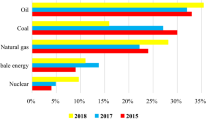Abstract
Concern about global climate change is growing, and many projects and researchers are committed to reducing greenhouse gases from all possible sources. International Maritime (IMO) has set a target of 20% CO2 reduction from shipping by 2020 and also presented a series of carbon emission reduction methods, which are known as Energy Efficiency Design Index (EEDI) and Energy Efficiency Operation Indicator (EEOI). Reviews on carbon emission reduction from all industries indicate that, Carbon Capture and Storage (CCS) is an excellent solution to global warming. In this paper, a comprehensive literature review of EEDI and EEOI and CCS is conducted and involves reviewing current policies, introducing common technologies, and considering their feasibilities for marine activities, mainly shipping. Current projects are also presented in this paper, thereby illustrating that carbon emission reduction has been the subject of attention from all over the world. Two case ship studies indicate the economic feasibility of carbon emission reduction and provide a guide for CCS system application and practical installation on ships.
Similar content being viewed by others
References
Barthelemy H, Bourdeaud’huy D, Jolivet J-L, Kohl U, Krinninger K, Teasdale D, Webb A, Williams S, 2010. Safe handling of liquid carbon dioxide containers that have lost pressure. Globally harmonised document, IGC Doc 164/10/E, European Industrial Gases Association (EIGA) Aisbl, Brussels.
Boden TA, Marland G, Andres RJ, 2010. Global, regional, and national fossil-fuel CO2 emissions. Carbon Dioxide Information Analysis Centre, Oak Ridge National Laboratory, U.S. Department of Energy, Oak Ridge. DOI: 10.3334/CDIAC/00001_V2010
DNV GL and PSE, 2013. Report on ship carbon capture & storage, Det Norske Veritas, Oslo and London, Available from https://www.psenterprise.com/news/news-press-releases-dnv-ps e-ccs-report [Accessed on Oct. 16, 2016]
Global CCS Institute, 2012. The Global Status of CCS: 2012. Global CCS Institute, Canberra, Australia. Available from http://decarboni.se/sites/default/files/publications/47936/globalstatus-ccs-2012.pdf [Accessed on Sep. 9, 2016]
Gorgon Australia, 2015. Carbon dioxide injection project. Chevron Project. Available from http://www.chevronaustralia.com/docs/default-source/default-document-library/fact-sheet-gorgon-c02-injection-project.pdf?sfvrsn=8 [Accessed on Oct. 16, 2016]
Houghton JT, 2004. Greenhouse gases. In: Global warming: The complete briefing, Cambridge University Press.
IMO, 2011. IMO train the trainer (TTT) course on energy efficient ship operation. International Maritime Organisation, London. Available from http://www.imo.org/en/OurWork/Environment/PollutionPrevention/AirPollution/Documents/Air%20pollution/M2%20EE%20regulations%20and%20guidelines%20final.pdf [Accessed on Oct. 18, 2016]
IMO, 2014. Third IMO GHG study 2014. Micropress Printers, Suffolk.
International Chamber of Shipping, 2014. Shipping, world trade and the reduction of CO2 emissions. International Chamber of Shipping (ICS), London.
MAN Diesel & Turbo, 2014. Improved efficiency and reduced CO2. MAN Diesel & Turbo, Available from http://marine.man.eu/docs/librariesprovider6/technical-papers/5510-0068-01ppr_low 12553af0bf5969569b45ff0400499204.pdf?sfvrsn=8 [Accessed on Oct. 18, 2016]
Melzer LS, Midland TX, 2012. Carbon dioxide enhanced oil recovery (CO2 EOR): Factors involved in adding carbon capture, utilization and storage (CCUS) to enhanced oil recovery. The National Enhanced Oil Recovery Initiative, Center for Climate and Energy Solutions, 1–17.
Metz B, Davidson O, de Coninck HC, Loos M, Meyer LA, 2007. IPCC special report on carbon dioxide capture and storage. Prepared by Working Group III of the Intergovernmental Panel on Climate Change, Cambridge University Press.
National Geographic, 2016. The greenhouse effect. Available from http://environment.nationalgeographic.com/environment/global-warming/gw-overview-interactive/[Accessed on Sep. 9, 2016]
SaskPower, 2014. Boundary dam integrated carbon capture and storage demonstration project. SaskPower CCS, Regina. Available from http://www.saskpower.com/wp-content/uploads/clean_coal_information_sheet.pdf [Accessed on Oct. 18, 2016]
Shao W, Zhou PL, Thong SK, 2012. Development of a novel forward dynamic programming method for weather routing. Journal of Marine Science and Technology, 17(2), 239–251. DOI: 10.1007/s00773-011-0152-z
Stern D, 2011. Global trends in carbon and sulfur emissions. Available from http://stochastictrend.blogspot.co.uk/2011/03/global-trends-in-carbon-and-sulfur.html [Accessed on Sep. 9, 2016]
U.S. Department of Energy, 2013. FutureGen 2.0 Project, Final Environmental Impact Statement, Available from http://energy.gov/sites/prod/files/2013/10/f4/EIS-0460-FEIS-Volume_II_Part_1-2013.pdf [Accessed on Oct. 16, 2016]
Wang HB, Zhou PL, Wang ZC, 2016. Experimental and numerical analysis on controllable factors of CO2 absorption efficiency of carbon solidification system. Ocean Engineering, 113, 133–143. DOI: 10.1016/j.oceaneng.2015.12.036
Wischnewski B, 2013. Peace software. Available from http://www. peacesoftware.de/einigewerte/co2_e.html [Accessed on Sep.12, 2013]
Zhou PL, Wang HB, 2014. Carbon capture and storage-Solidification and storage of carbon dioxide captured on ships. Ocean Engineering, 91, 172–180. DOI: 10.1016/j.oceaneng.2014.09.006
Author information
Authors and Affiliations
Corresponding author
Rights and permissions
About this article
Cite this article
Wang, H., Zhou, P. & Wang, Z. Reviews on current carbon emission reduction technologies and projects and their feasibilities on ships. J. Marine. Sci. Appl. 16, 129–136 (2017). https://doi.org/10.1007/s11804-017-1413-y
Received:
Accepted:
Published:
Issue Date:
DOI: https://doi.org/10.1007/s11804-017-1413-y




